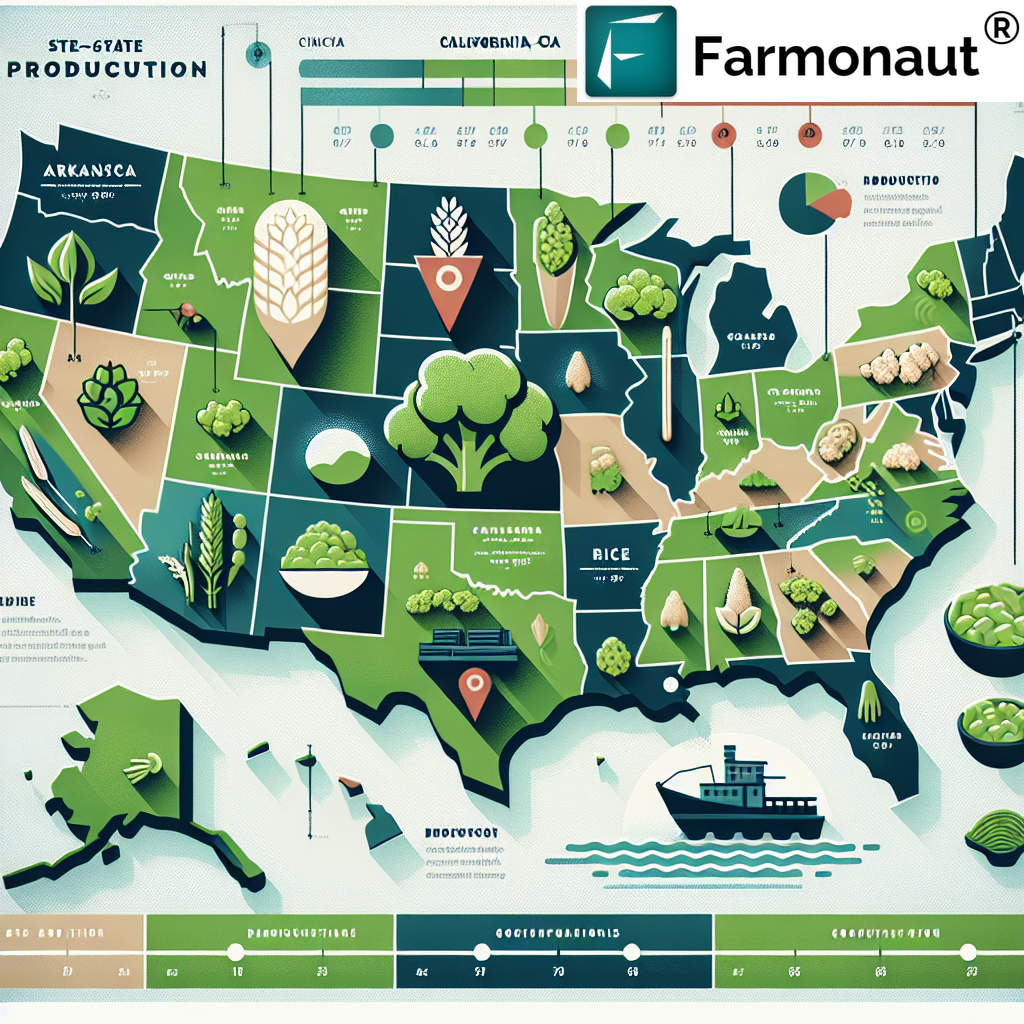2024 Wisconsin Dairy Outlook: DMC Program Impact and Farm Bill Updates for Producers
“In 2023, the Dairy Margin Coverage program paid out over $1.27 billion in indemnities to participating dairy operations.”

As we look ahead to 2024, Wisconsin’s dairy industry stands at a crossroads, with the Dairy Margin Coverage (DMC) program and upcoming farm bill playing pivotal roles in shaping the future of our state’s iconic agricultural sector. In this comprehensive analysis, we’ll explore the DMC’s performance in 2023, its implications for the coming year, and how these factors intertwine with broader agricultural policy updates to impact our rural operations.
For dairy producers navigating uncertain milk prices, understanding the nuances of these programs is crucial. Let’s dive into the details and uncover strategies for optimizing farm profitability, embracing sustainable practices, and leveraging government support to ensure the continued success of Wisconsin’s dairy farms.
DMC Program: A Lifeline for Dairy Producers
The Dairy Margin Coverage program has proven to be a critical safety net for Wisconsin’s dairy farmers. In 2023, the program’s impact was substantial, demonstrating its importance in the agricultural financial support landscape.
- Total Indemnity Payments: Over $1.27 billion distributed to participating operations
- Enrollment Rate: An impressive 74.5% of eligible farms participated
- Coverage Period: The current Farm Bill extends DMC through September 2024
These figures underscore the program’s significance in providing a financial buffer against market volatility and rising production costs. As we approach 2024, producers are eagerly awaiting enrollment details for the coming year, recognizing the DMC as a cornerstone of their risk management strategies.
2023 DMC Performance: A Closer Look
To truly appreciate the impact of the DMC program, let’s break down its performance in 2023:
- Monthly Payments: The program triggered payments in multiple months, providing consistent support
- Average Payout: Participating farms received substantial financial assistance, helping to offset production costs
- Price Thresholds: The program responded effectively to fluctuations in milk prices and feed costs
This robust performance has reinforced the DMC’s role as a crucial tool for dairy farm profitability. By providing a safety net, it allows producers to focus on long-term planning and sustainable practices rather than being consumed by short-term market pressures.
Anticipating 2024: DMC Outlook and Farm Bill Updates
As we look towards 2024, several factors will influence the DMC program’s impact on Wisconsin dairy producers:
- Milk Price Forecast: Projected market conditions will affect payment triggers
- Feed Cost Trends: Fluctuations in corn, soybean, and alfalfa prices will impact margin calculations
- Enrollment Period: Timely participation will be crucial for maximizing benefits
- Policy Changes: Potential updates in the 2024 Farm Bill could alter program parameters
Producers should stay informed about these developments and consider how they might affect their individual operations. Engaging with agricultural extension services and industry associations can provide valuable insights for navigating these changes.
“74.5% of eligible farms enrolled in the Dairy Margin Coverage program, highlighting its importance in agricultural financial support.”
Strategies for Dairy Farm Profitability in 2024
While the DMC program provides a crucial safety net, Wisconsin dairy producers should also focus on holistic strategies to enhance profitability:
- Operational Efficiency: Implement technologies to optimize resource use and reduce waste
- Diversification: Consider value-added products or agritourism to supplement income
- Sustainable Practices: Adopt methods that improve soil health and reduce input costs
- Marketing Strategies: Explore niche markets or direct-to-consumer sales channels
- Financial Planning: Utilize farm credit programs and maintain strong relationships with lenders
By combining these strategies with DMC participation, producers can build more resilient and profitable operations.

The Role of Technology in Modern Dairy Farming
In an era of precision agriculture, leveraging technology can significantly impact a dairy operation’s success. Farmonaut, a leading agricultural technology company, offers innovative solutions that can benefit Wisconsin dairy producers:
- Satellite-Based Crop Monitoring: Optimize feed production with real-time vegetation health data
- AI Advisory Systems: Receive personalized recommendations for farm management
- Weather Forecasting: Make informed decisions about grazing and harvesting
- Resource Management Tools: Improve efficiency in water and energy use
By integrating these technologies, dairy farmers can enhance their decision-making processes and potentially increase their eligibility for government support programs like DMC.
Explore Farmonaut’s solutions:
Agricultural Policy Updates and Their Impact
The agricultural landscape is constantly evolving, with policy changes playing a significant role in shaping the industry. Key areas to watch include:
- USDA Programs: Changes in conservation stewardship initiatives and rural development grants
- Trade Policies: Updates from the USTR that may affect dairy exports
- Environmental Regulations: New guidelines on nitrogen application and carbon footprinting
- Organic Certification: Potential updates to organic dairy standards
Staying informed about these policy updates is crucial for dairy producers looking to optimize their operations and take advantage of available support mechanisms.
Weather Considerations and Yield Forecasts
Wisconsin’s climate plays a crucial role in dairy production. As we look towards 2024, consider these factors:
- Precipitation Patterns: Impact on pasture growth and feed crop yields
- Temperature Trends: Effects on cattle comfort and milk production
- Extreme Weather Events: Preparedness for potential disruptions
Utilizing advanced weather forecasting tools, such as those offered by Farmonaut, can help producers make proactive decisions about herd management and crop planning. For more information on weather data integration, visit Farmonaut’s API.
Sustainable Dairy Farming Practices
Sustainability is no longer just a buzzword; it’s a necessity for long-term success in dairy farming. Consider implementing these practices:
- Manure Management: Implement systems that reduce environmental impact and generate additional income
- Energy Efficiency: Invest in renewable energy sources like solar or biogas
- Water Conservation: Adopt precision irrigation techniques for feed crops
- Soil Health: Implement crop rotation and cover cropping to improve pasture quality
These practices not only contribute to environmental stewardship but can also improve farm economics and potentially qualify for additional government support.
DMC Program Impact on Wisconsin Dairy Farms (2023-2024)
| Metric | 2023 Actual | 2024 Estimate | Percent Change |
|---|---|---|---|
| Total DMC Indemnity Payments ($) | 1,270,000,000 | 1,350,000,000 | +6.3% |
| Percentage of Eligible Farms Enrolled | 74.5% | 76% | +2% |
| Average Payment per Enrolled Farm ($) | 42,333 | 44,100 | +4.2% |
| Milk Price Threshold for Payments ($/cwt) | 9.50 | 9.50 | 0% |
| Feed Cost Index | 11.20 | 11.40 | +1.8% |
| Number of Months Payments Triggered | 8 | 7 | -12.5% |
| Total Dairy Farms in Wisconsin | 6,800 | 6,650 | -2.2% |
| Average Herd Size | 170 | 175 | +2.9% |
This table provides a clear comparison of key DMC program metrics for Wisconsin dairy producers across 2023 and 2024 (estimated). It illustrates the program’s ongoing importance and the evolving landscape of dairy farming in the state.
Leveraging Technology for Farm Operation Management
In today’s digital age, technology plays a crucial role in efficient farm management. Farmonaut offers a range of tools that can benefit dairy producers:
- Satellite Imagery Analysis: Monitor pasture health and feed crop conditions
- AI-Powered Insights: Receive customized recommendations for farm operations
- Resource Optimization: Track and manage water, energy, and input usage
- Data-Driven Decision Making: Use real-time information to guide farm strategies
By integrating these technologies, dairy farmers can enhance their operational efficiency and make more informed decisions. For more details on how to implement these tools, check out the Farmonaut API Developer Docs.
The Future of Wisconsin Dairy: Trends and Projections
As we look beyond 2024, several trends are shaping the future of Wisconsin’s dairy industry:
- Consolidation: Continued trend towards larger, more efficient operations
- Value-Added Products: Increased focus on specialty cheeses and artisanal dairy goods
- Technology Adoption: Greater integration of robotics and AI in dairy farming
- Sustainability Initiatives: Emphasis on carbon-neutral or regenerative dairy practices
- Consumer Preferences: Growing demand for organic and grass-fed dairy products
Adapting to these trends while leveraging programs like DMC will be key to the long-term success of Wisconsin’s dairy farms.
Preparing for 2024: Action Steps for Dairy Producers
As we approach 2024, here are key steps Wisconsin dairy producers should consider:
- Review DMC enrollment options and deadlines
- Assess farm financials and consider consulting with an agricultural economist
- Explore technology upgrades to improve operational efficiency
- Evaluate sustainable practices that could qualify for additional support or market premiums
- Stay informed about upcoming Farm Bill discussions and potential policy changes
- Network with other producers and industry experts to share best practices
By taking these proactive steps, dairy farmers can position themselves for success in the evolving agricultural landscape.
Conclusion: Navigating the Future of Wisconsin Dairy
The 2024 outlook for Wisconsin dairy is a complex interplay of government programs, market forces, technological advancements, and environmental considerations. The DMC program continues to be a crucial support mechanism, but producers must also embrace innovation and sustainable practices to thrive.
By staying informed about policy updates, leveraging technology like Farmonaut’s solutions, and adapting to changing consumer preferences, Wisconsin’s dairy farmers can continue their legacy of excellence. The road ahead may have challenges, but with the right strategies and support, our state’s dairy industry is well-positioned to remain a leader in the global market.
Farmonaut Subscriptions
Frequently Asked Questions
Q: What is the Dairy Margin Coverage (DMC) program?
A: The DMC is a voluntary risk management program that offers protection to dairy producers when the difference between the all-milk price and the average feed cost falls below a certain dollar amount selected by the producer.
Q: How do I enroll in the DMC program for 2024?
A: Enrollment details for 2024 will be announced by the USDA. Typically, producers can enroll through their local Farm Service Agency (FSA) office or online through the farmers.gov portal.
Q: How does the Farm Bill affect dairy producers?
A: The Farm Bill sets the framework for agricultural and food policy, including programs like DMC. It influences funding for dairy support programs, conservation initiatives, and research that can impact dairy operations.
Q: What are some sustainable practices for dairy farms?
A: Sustainable practices include efficient manure management, renewable energy use, water conservation, soil health improvement through crop rotation, and implementing precision agriculture techniques.
Q: How can technology improve dairy farm operations?
A: Technology like satellite imagery, AI advisory systems, and resource management tools can help optimize crop production for feed, improve herd health monitoring, and increase overall operational efficiency.
We hope this comprehensive overview of the 2024 Wisconsin Dairy Outlook provides valuable insights for producers navigating the challenges and opportunities ahead. By staying informed and adaptable, our dairy industry can continue to thrive in the face of change.



















